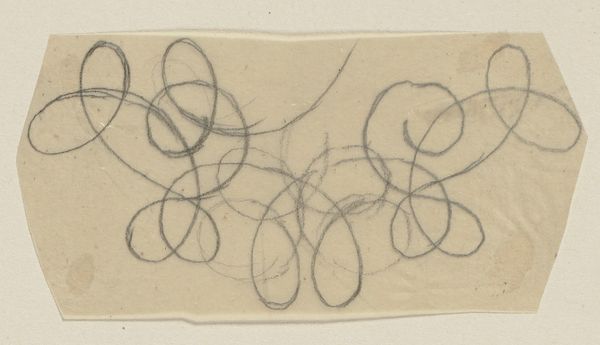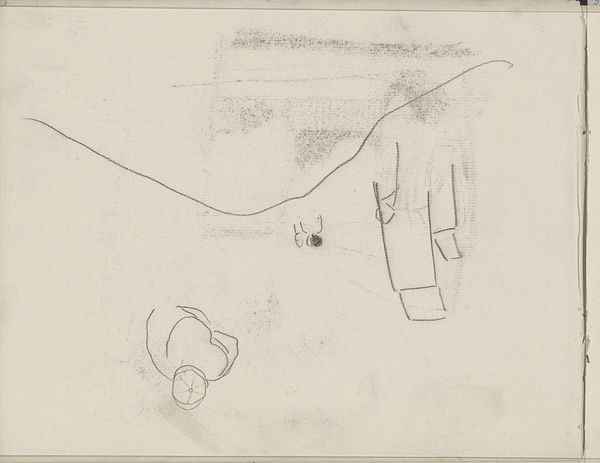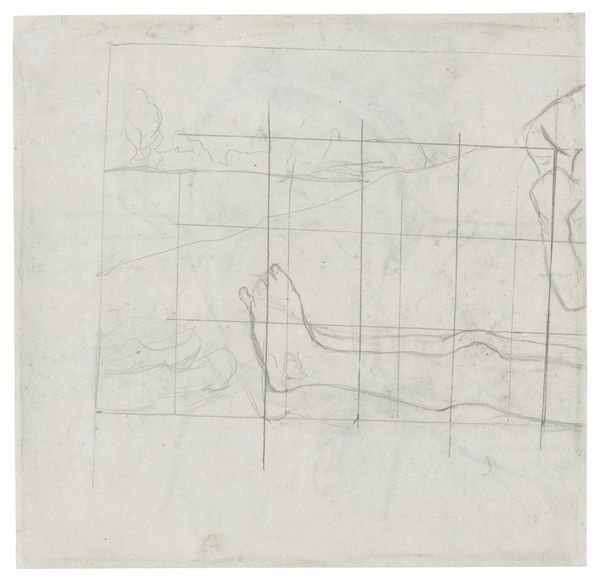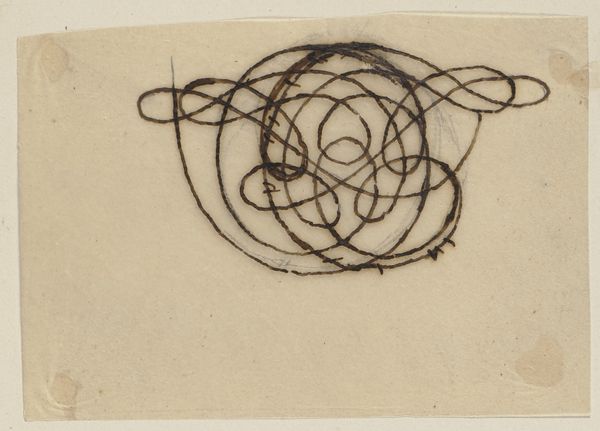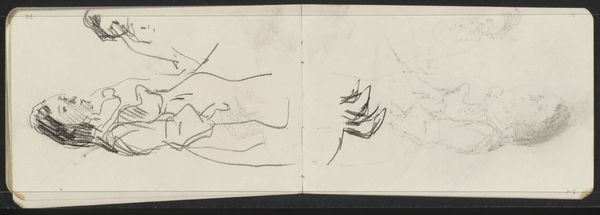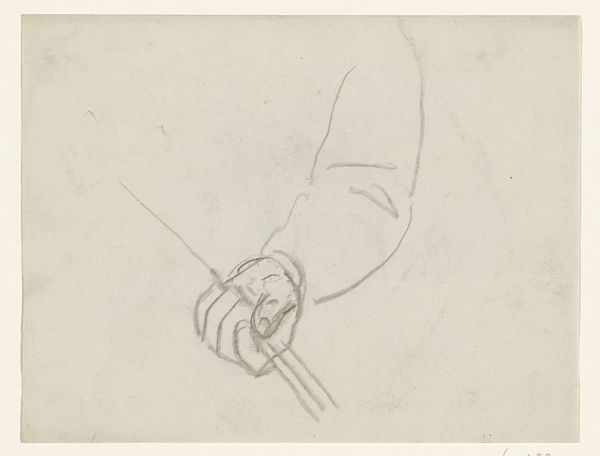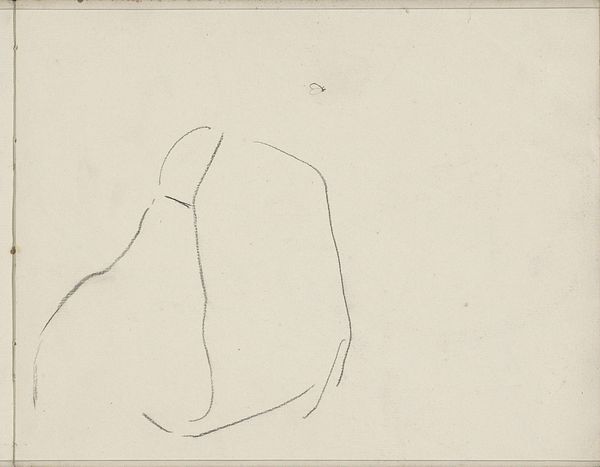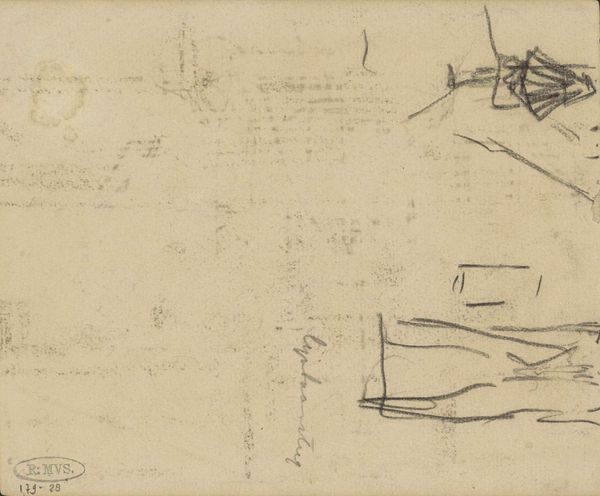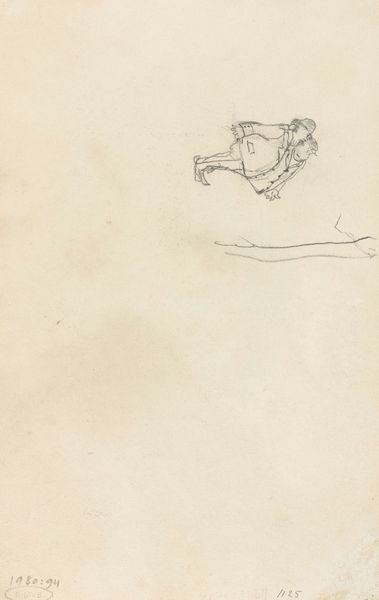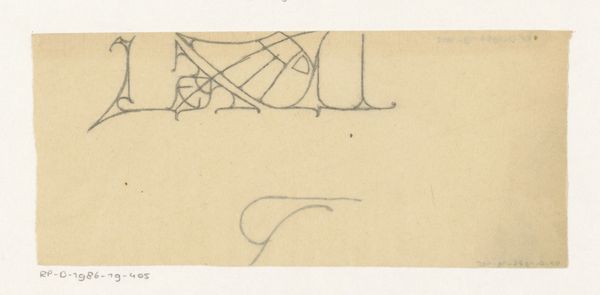
Ornament der Hermia als unwirsches Kind im Streit mit einem anderen Kind c. 1867 - 1868
0:00
0:00
Copyright: Public Domain
Editor: Here we have Paul Konewka's "Ornament der Hermia als unwirsches Kind im Streit mit einem anderen Kind," created around 1867-1868. It's a drawing, using pencil on paper, that gives off a somewhat playful yet incomplete feeling with its sketch-like quality. I’m intrigued by the fragment of text in the background too. How do you interpret this work within its historical and cultural context? Curator: It’s interesting to consider this drawing within the broader context of 19th-century Romanticism and its fascination with childhood and fairy tales, particularly the work of Shakespeare. Konewka was known for his silhouette illustrations and it may be connected with his ambition to design silhouettes for ‘A Midsummer Night’s Dream’. What strikes me is how the ornament seemingly encloses the idea of children quarrelling. Editor: So, the “Ornament” acts as both a design and a commentary on the children's conflict? That almost feels satirical, or perhaps ironic. Do you think the institutional settings of art production in Konewka's time influenced the development and promotion of works like these? Curator: Absolutely. The rising prominence of museums and art societies helped popularize certain subjects and styles. Something like this is interesting. I wonder how he intended this drawing for public consumption or distribution and perhaps how its themes of conflict resonate with social tensions of the period? Was it a decorative piece meant for private viewing, or a design intended for broader circulation through print? The background writing also hints at what may have been on his mind, although a study needs to clarify the text's importance and significance. Editor: I see how thinking about the art world of the time can reframe the picture. Initially, it looked like a simple sketch, but it's probably related to book illustration. That's such a reminder to dig deeper into social and historical cues to reveal meaning! Curator: Indeed! Looking at art through a social and institutional lens gives artworks dimensions you would not find through the artwork itself.
Comments
No comments
Be the first to comment and join the conversation on the ultimate creative platform.
